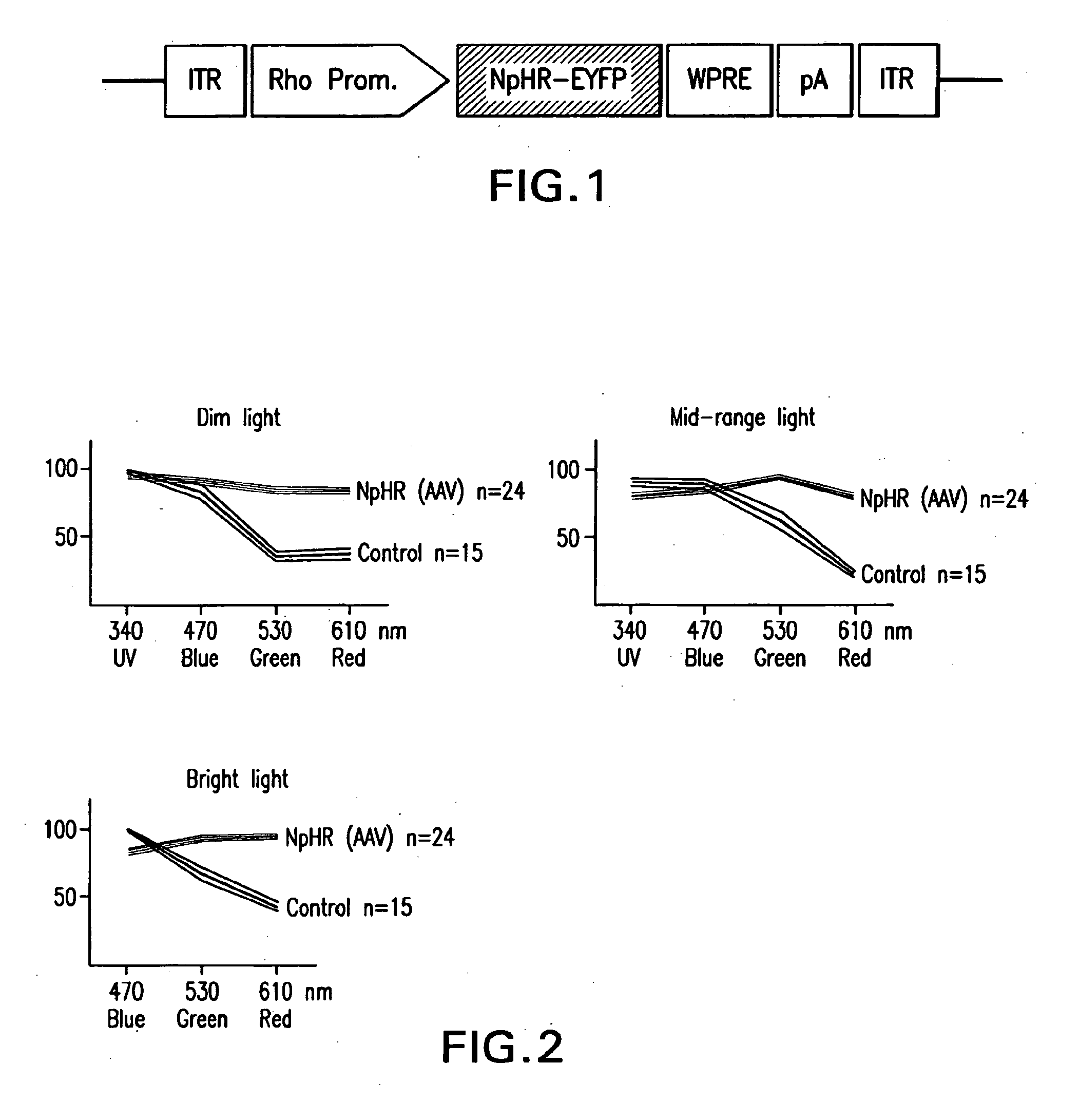Novel Therapeutical Tools and Methods for Treating Blindness
a technology of blindness and therapeutic tools, applied in the field of blindness treatment, can solve the problems of degeneration of photoreceptors, disfunction of the retina, and millions of people's blindness, and achieve the effect of restoring vision and restoring some vis
- Summary
- Abstract
- Description
- Claims
- Application Information
AI Technical Summary
Benefits of technology
Problems solved by technology
Method used
Image
Examples
examples
Genetic Approaches:
[0122]The present inventors expressed the red-light-sensitive chloride pump NpHR (Zhang et al., Multimodal fast optical interrogation of neural circuitry, Nature Vol466 (2007)) in photoreceptors of C57BL / 6 mice using adeno associated virus vector, AAV2 / 7 (Allocca et al., Novel AAV serotypes efficiently transduce murine photoreceptors, J Virol. (2007)), mediated gene transfer. NpHR was driven from the human rhodopsin promoter.
Detection of NpHR in Infected Retinae:
[0123]AAV2 / 7-Rho-NpHR-EYFP (5.35E+12 particles / ml) was injected subretinally into adult C57BL / 6 mice. Retinae of infected animals were prepared at different time points post injection. These retinae were antibody-stained for EYFP to label NpHR-expressing cells and with DAPI to visualize all cells in the outer nuclear layer (ONL). Confocal microscopy recordings were performed and these were analyzed by using Bitplane's Imaris (5.7.2) software.
[0124]The quantification of infected photoreceptors was done by c...
PUM
| Property | Measurement | Unit |
|---|---|---|
| Tm | aaaaa | aaaaa |
| temperature | aaaaa | aaaaa |
| temperature | aaaaa | aaaaa |
Abstract
Description
Claims
Application Information
 Login to View More
Login to View More - R&D
- Intellectual Property
- Life Sciences
- Materials
- Tech Scout
- Unparalleled Data Quality
- Higher Quality Content
- 60% Fewer Hallucinations
Browse by: Latest US Patents, China's latest patents, Technical Efficacy Thesaurus, Application Domain, Technology Topic, Popular Technical Reports.
© 2025 PatSnap. All rights reserved.Legal|Privacy policy|Modern Slavery Act Transparency Statement|Sitemap|About US| Contact US: help@patsnap.com

